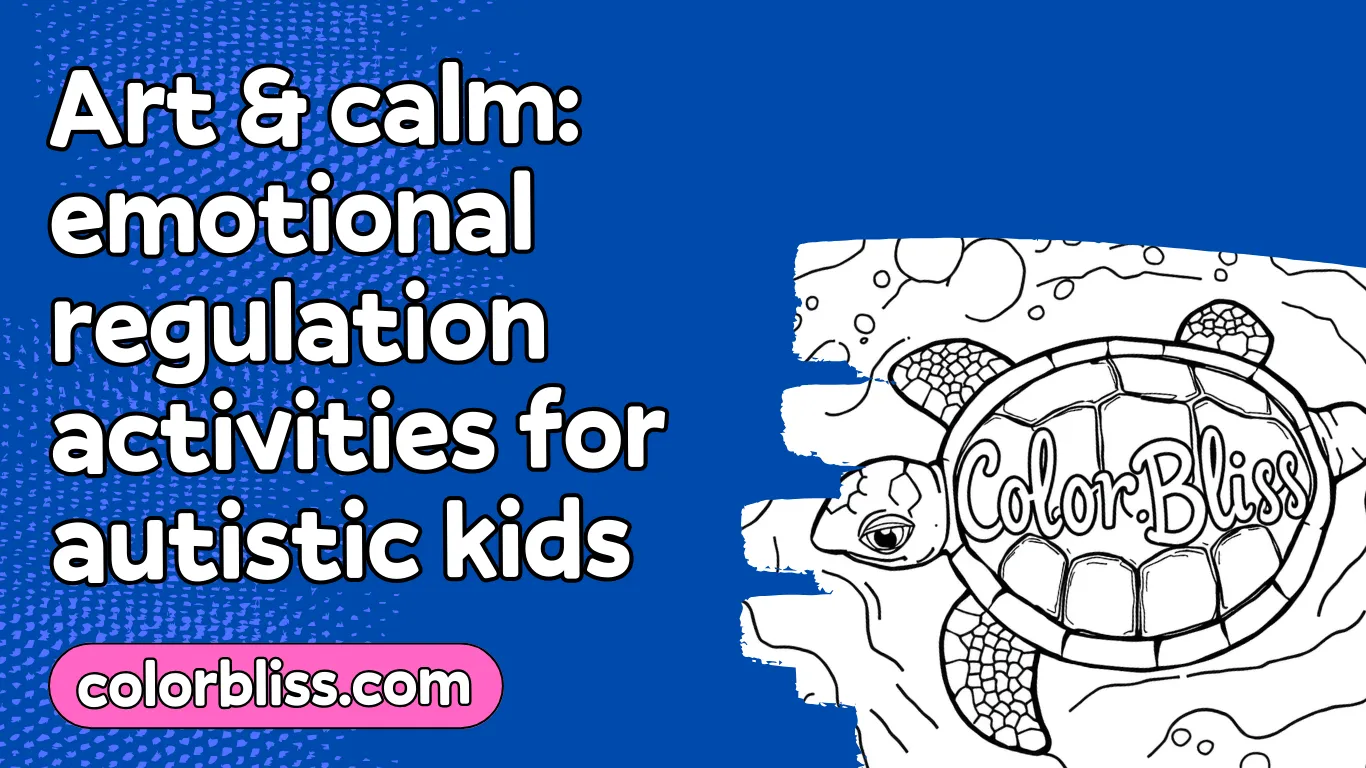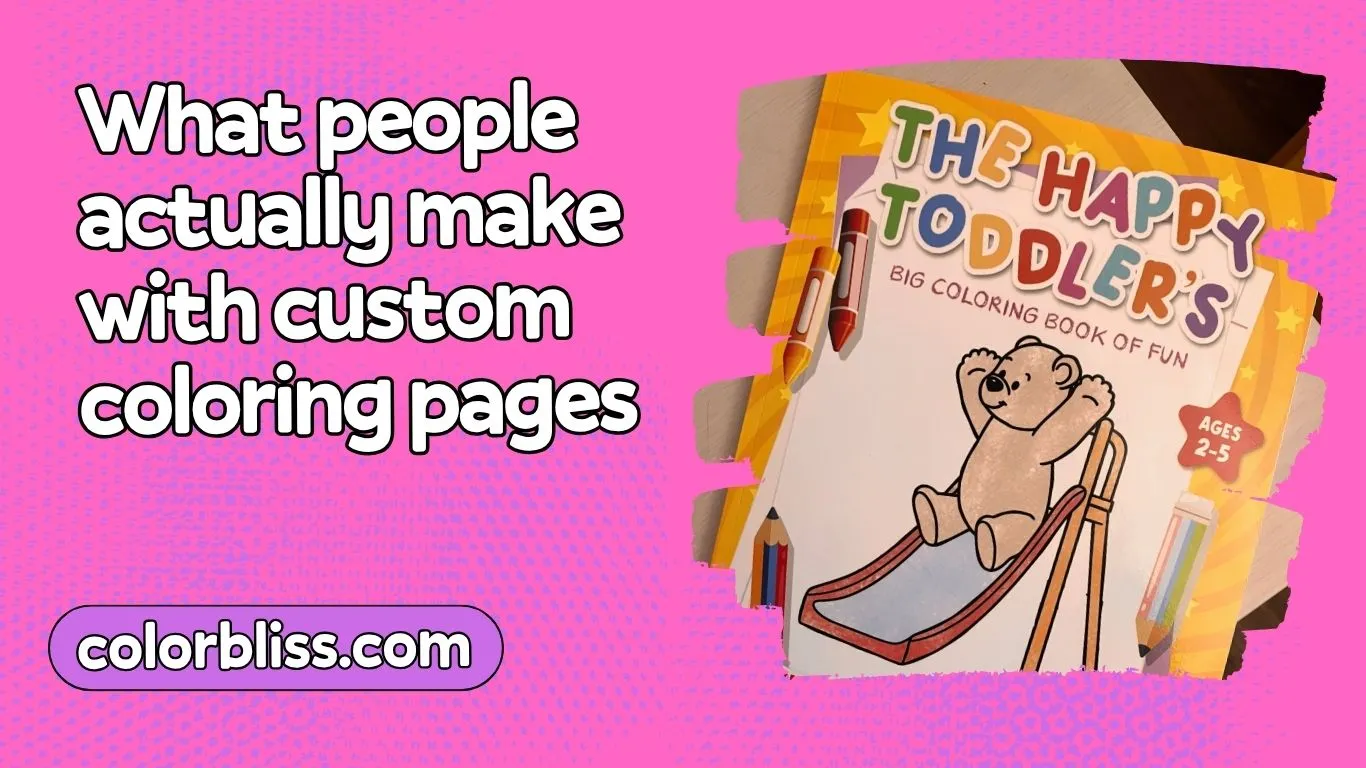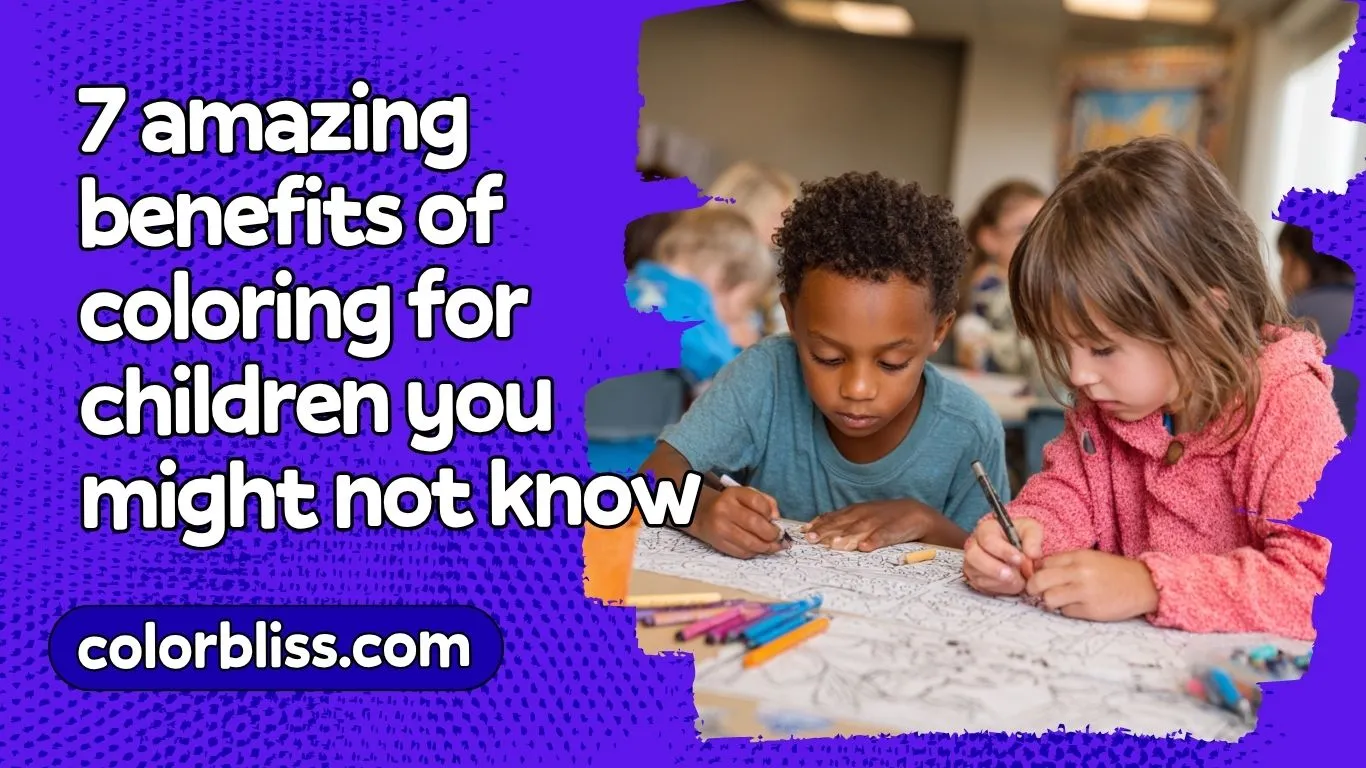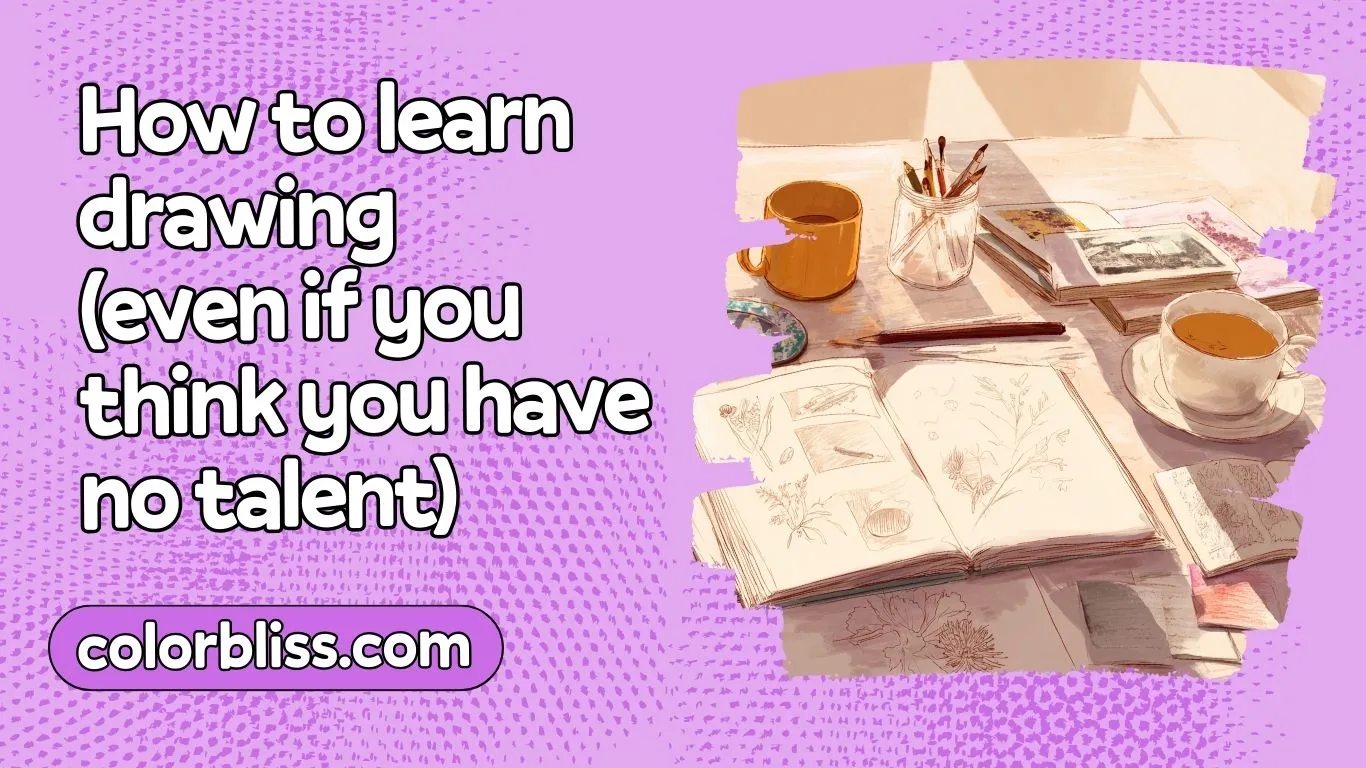Art & calm: emotional regulation activities for autistic kids

Children with autism often face unique challenges when it comes to processing emotions and managing sensory experiences. Art therapy offers a powerful, non-verbal way for these children to express themselves, develop emotional regulation skills, and build connections with others.
How art therapy helps autistic children regulate emotions
Art therapy provides a structured yet flexible environment for emotional expression that works particularly well for children with autism spectrum disorder (ASD). Research published in the American Journal of Occupational Therapy shows that creative arts interventions significantly benefit autistic children in two critical areas: social interaction skills and emotional regulation.
Why does art therapy work so effectively for these children?
First, art bypasses verbal communication barriers. Many autistic children struggle with verbal expression but excel at visual thinking. Art gives them a concrete, visual way to express complex emotions they might not have words for. A child who can’t say “I’m overwhelmed” can show it through color choices, line pressure, or the space they use on paper.
Second, art activities provide sensory regulation opportunities. Children with autism often have sensory processing differences. The tactile experience of different art materials – from smooth clay to textured collage papers – helps them develop sensory awareness in a controlled, positive environment. These sensory experiences can be calibrated to each child’s needs, offering either stimulation or calming input.
Third, art creation builds emotional literacy through a safe, non-threatening medium. Identifying emotions is often challenging for autistic children, but art helps bridge this gap. Drawing faces showing different emotions, creating color charts for feelings, or making sculptures that represent their emotional states helps children recognize and label their feelings – the first step toward managing them.
Research from the University of Texas Medical Branch found that multiple art therapy sessions created measurable improvements in emotional regulation for autistic children. Unlike some therapies that require immediate verbal processing, art allows children to explore emotions at their own pace, creating a sense of safety and control.
Most importantly, art therapy sessions provide predictable structure with room for creative expression – an ideal balance for many autistic children who thrive on routine but need opportunities to develop flexibility. The consistent format of an art activity (gather materials, create, clean up) provides comforting boundaries while the creative process itself encourages adaptability and problem-solving.
Simple art activities you can try at home
You don’t need to be an art therapist to use creative activities to help your autistic child develop emotional regulation skills. Here are several sensory-friendly art projects you can implement at home with materials you likely already have:
Emotion Color Bottles
- Fill clear plastic bottles halfway with water
- Let your child select colors that represent different feelings (blue for calm, red for angry)
- Add food coloring and glitter
- Seal tightly and use as visual timers or calming tools during emotional moments
These bottles become visual metaphors for emotions – shake them when upset and watch as the swirling contents gradually settle, just like big feelings.
Sensory Finger Painting
For children who enjoy tactile input:
- Mix cornstarch, water, and food coloring for a smooth, washable paint
- Provide a tray with raised edges to contain mess
- Allow exploration without expectations for a “finished product”
For children sensitive to messy textures:
- Try painting inside a sealed ziplock bag
- Use paintbrushes with different handle thicknesses
- Offer latex-free gloves as an option
Feelings Collage Box
- Collect magazines, catalogs, and textured papers in a special box
- When your child experiences a strong emotion, pull out the box
- Cut or tear images and textures that match their feelings
- Glue onto cardboard to create a visual representation of the emotion
This activity validates feelings while channeling emotional energy into constructive expression.
Calming Sensory Dough
Recipe:
- 1 cup flour
- 1/2 cup salt
- 2 tsp cream of tartar
- 1 tbsp vegetable oil
- Food coloring (optional)
- Lavender or chamomile essential oil (just a drop for calming properties)
- 1 cup water, gradually added while stirring over low heat until dough forms
Kneading this dough provides deep pressure sensory input that many autistic children find regulating. The repetitive motion helps transition from heightened states to calmer ones.
Remember to follow your child’s lead with these activities. Some days they might engage for 30 minutes, other days just 2 minutes – both are perfectly fine. The goal isn’t to create masterpieces but to provide opportunities for emotional expression and regulation through art.
Using coloring pages for emotional regulation practice
Coloring is one of the most accessible and effective art activities for emotional regulation in autistic children. The structured nature of coloring pages provides a comforting framework that reduces anxiety while still allowing for personal expression through color choice.
Research from Florida State University found that just 20 minutes of coloring can significantly reduce anxiety levels and improve focus. For autistic children who may experience heightened anxiety or emotional dysregulation, coloring offers several unique benefits:
- Predictable boundaries: The defined lines provide clear expectations and reduce decision fatigue
- Flow state induction: The repetitive motion of coloring can induce a meditative flow state
- Sensory regulation: The pressure applied while coloring provides proprioceptive feedback
- Achievable success: Completing a coloring page offers a concrete sense of accomplishment
While standard coloring books can work well, personalized coloring pages that feature a child’s specific interests are even more engaging and effective. This is where ColorBliss.com’s innovative tools become invaluable for parents and caregivers.
Transform photos into coloring pages
ColorBliss’s photo-to-coloring page converter lets you transform any image into a custom coloring page. This feature is perfect for:
- Converting photos of a child’s favorite objects or special interests
- Creating coloring pages of family members to help process emotions about social situations
- Turning pictures of familiar places (like home or school) into calming coloring activities before transitions
For a child who loves trains but gets overwhelmed at stations, having a coloring page of their specific train route can help prepare for the journey. The combination of their special interest with the regulating activity of coloring creates a powerful emotional support tool.
Generate custom coloring pages with AI
The AI coloring page generator takes customization even further. Parents can describe any scenario or interest, and ColorBliss will create a unique coloring page. This opens up countless possibilities for emotional regulation support:
- Generate scenes depicting emotional situations (“happy kids playing” or “calm child taking deep breaths”)
- Create pages showing coping strategies specific to your child’s needs
- Develop sequential coloring pages that tell a story about managing difficult emotions
For example, if transitions between activities trigger meltdowns, you could generate a series of coloring pages showing a child successfully moving from playtime to dinner time, creating a visual narrative that builds emotional resilience.
Practical implementation tips
To maximize the emotional regulation benefits of coloring:
- Offer a choice between 2-3 pages rather than an overwhelming selection
- Consider using thicker paper for children who apply heavy pressure when coloring
- Provide various coloring tools (crayons, colored pencils, markers) with different sensory profiles
- Create a “calm down kit” with ColorBliss coloring pages featuring your child’s favorite subjects
- Establish a regular coloring routine during potentially stressful times of day
By incorporating ColorBliss’s personalized coloring resources into your emotional regulation toolkit, you’re not just providing an activity your child enjoys—you’re creating customized visual supports that address their specific emotional needs.
Creating visual supports for emotional awareness
Many autistic children are visual thinkers who process information more effectively through images than words. Creating customized visual supports can dramatically improve their ability to recognize, label, and manage emotions.
Emotion identification cards
Visual emotion cards are essential tools for building emotional literacy. While you can purchase pre-made sets, creating customized cards with ColorBliss offers several advantages:
- Upload photos of your child showing different emotions to convert into coloring pages
- Generate AI illustrations of emotions that match your child’s appearance or interests
- Create cards showing emotions at different intensity levels (slightly upset vs. very angry)
To make a basic set:
- Generate 6-8 core emotions (happy, sad, angry, scared, calm, excited)
- Print on cardstock for durability
- Laminate if possible
- Add simple labels and color-coding (red for angry, blue for sad)
Use these cards daily by having your child point to how they’re feeling, or play matching games to strengthen emotional recognition.
Visual emotion scales
For children who struggle with emotion intensity, visual scales provide crucial context. Using ColorBliss:
- Generate or convert images showing graduated levels of an emotion (slightly anxious to panic)
- Create a 5-point scale with facial expressions and color gradients
- Add simple coping strategy icons beside each level
These scales give children concrete language to communicate their emotional state (“I’m at a 4”) and prompt appropriate regulation strategies before reaching crisis.
Personal social stories
Social stories help autistic children understand and prepare for emotional situations. ColorBliss makes creating these stories simple:
- Generate a series of AI illustrations showing:
- A triggering situation
- Recognition of emotional response
- Coping strategies
- Positive resolution
- Add simple text explaining each step
- Create personalized characters that resemble your child
For example, if playground noise causes distress, create a story showing a child recognizing overwhelm, putting on noise-canceling headphones, and continuing to play happily.
Calm-down sequence visuals
Visual schedules for calming down provide concrete steps for emotional regulation:
- Generate illustrations of each regulation strategy (deep breaths, squeezing a stress ball)
- Arrange in sequence from most active to calming
- Create a portable version for your child’s backpack
When emotions escalate, point to the visual sequence rather than giving verbal directions, which can be harder to process during emotional moments.
Implementation tips
- Keep visual supports accessible in multiple locations
- Regularly practice with these tools during calm moments
- Use consistent language and symbols across different supports
- Update and adapt the visuals as your child develops new skills
- Involve your child in creating these supports when possible
By leveraging ColorBliss’s custom coloring page tools, you can create visual emotional supports perfectly tailored to your child’s unique needs, interests, and learning style.
Building a sensory-friendly art space
Creating an art environment that accommodates sensory sensitivities can make the difference between a stressful experience and a therapeutic one. Here’s how to set up an art space that supports emotional regulation for autistic children:
Physical setup
Seating options:
- Provide seating with good proprioceptive feedback (wobble stools, therapy balls)
- Include weighted lap pads or cushions for grounding
- Offer both floor and table options to accommodate different preferences
Lighting considerations:
- Use natural light when possible, avoiding harsh fluorescents
- Install dimmer switches for adjustable brightness
- Provide sunglasses or visors for light-sensitive children
- Position the workspace away from flickering lights
Sound management:
- Place the art area in a quieter part of the home
- Use noise-canceling headphones if needed
- Add soft surfaces (rugs, cushions) to absorb sound
- Consider white noise machines to mask unpredictable sounds
Materials organization
Clear visual structure:
- Store materials in transparent containers
- Label everything with pictures and words
- Group similar items together
- Use color-coding systems for different supply categories
Accessibility:
- Place most-used items at your child’s eye level
- Consider open shelving so materials are visible
- Limit visible options to prevent overwhelm
- Rotate materials rather than displaying everything at once
Sensory-friendly supplies
For tactile-sensitive children:
- Provide tools with different handle thicknesses
- Offer gloves or brushes for messy materials
- Include textured grip surfaces for pencils and crayons
- Supply wet wipes for quick clean-up
For scent-sensitive children:
- Use unscented art supplies
- Ensure good ventilation
- Store scented items (markers) in sealed containers
- Label materials with scent warnings
Routine and structure
Visual schedules:
- Create a simple visual sequence for art sessions (setup, create, clean)
- Include a visual timer that shows how long the activity will last
- Post clear cleanup instructions with pictures
- Establish consistent transition warnings (5 minutes left)
Emotional safety:
- Designate a nearby calming corner for breaks if needed
- Provide a visual “break” card your child can use
- Keep preferred sensory tools accessible
- Establish clear boundaries about material use
Personalized touches
Incorporate special interests into the art space design to increase engagement:
- Use ColorBliss to generate custom coloring pages featuring special interests
- Display your child’s completed artwork in dedicated spaces
- Create visual cues based on favorite characters or themes
- Design organization systems around preferred topics or colors
Remember that an ideal art space evolves with your child’s needs. Regularly observe what’s working and adjust accordingly. Even simple modifications can dramatically improve your child’s ability to engage with art as an emotional regulation tool.
Conclusion: Bringing it all together
Art activities offer powerful tools for emotional regulation in autistic children, providing sensory experiences, non-verbal expression, and calming focus. By incorporating personalized art into daily routines, you create opportunities for your child to develop emotional awareness and coping strategies in a low-pressure, enjoyable way.
ColorBliss’s photo-to-coloring page converter and AI coloring page generator provide unique advantages for parents of autistic children. These tools allow you to create custom resources that precisely match your child’s interests, needs, and learning style – transforming ordinary art activities into targeted emotional regulation support.
Ready to try art-based emotional regulation activities with your child? Start with these simple steps:
- Pick one activity from this guide that matches your child’s sensory preferences
- Visit ColorBliss.com to create custom coloring pages based on your child’s interests
- Set up a simple art space with minimal materials
- Start with short sessions (5-10 minutes) and gradually extend as your child engages
Remember that the goal isn’t artistic perfection but emotional connection and regulation. By meeting your child where they are and following their lead, you’ll discover how art can become a valuable communication bridge and coping strategy that supports their emotional development.



